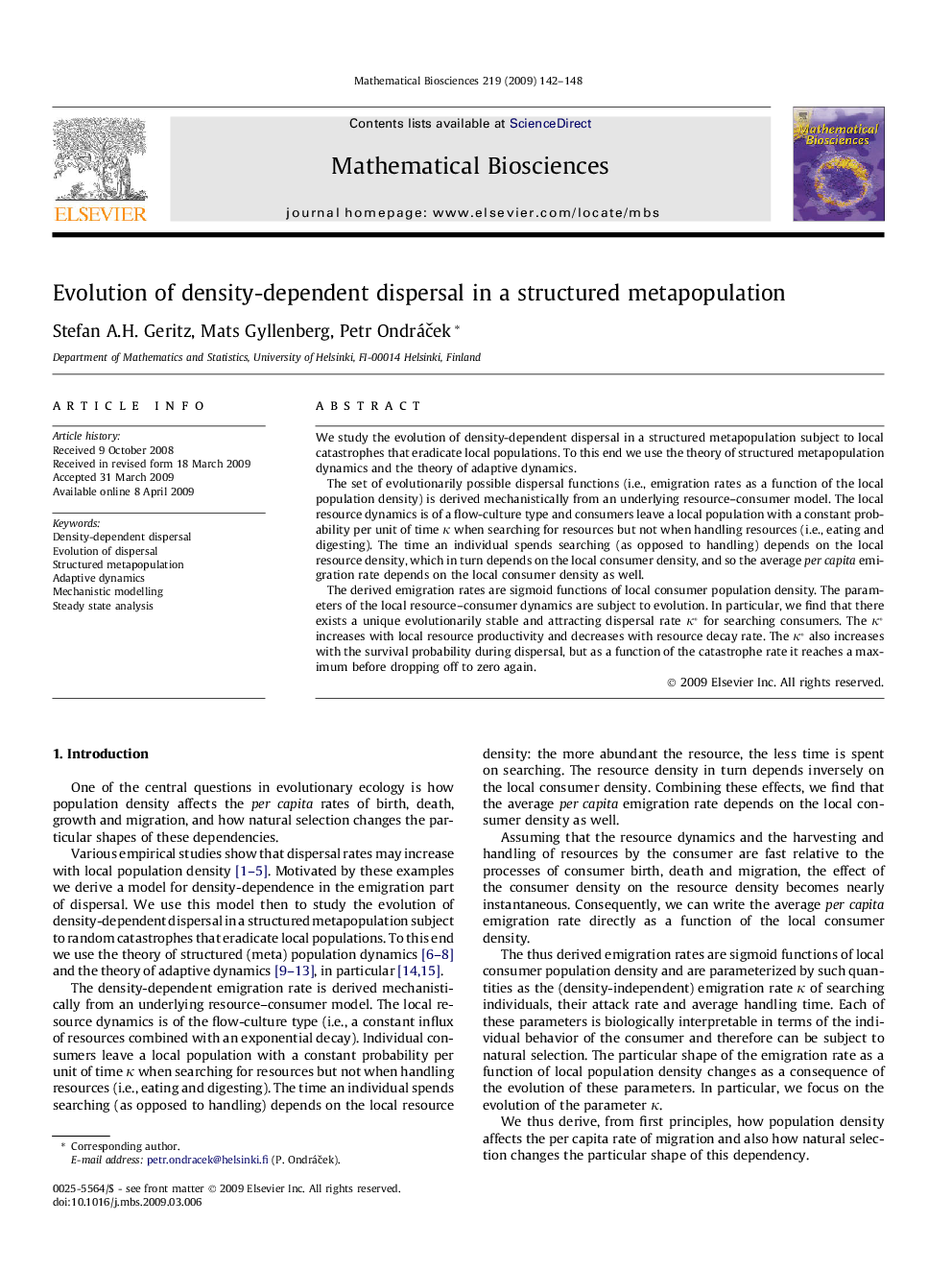| Article ID | Journal | Published Year | Pages | File Type |
|---|---|---|---|---|
| 4500691 | Mathematical Biosciences | 2009 | 7 Pages |
We study the evolution of density-dependent dispersal in a structured metapopulation subject to local catastrophes that eradicate local populations. To this end we use the theory of structured metapopulation dynamics and the theory of adaptive dynamics.The set of evolutionarily possible dispersal functions (i.e., emigration rates as a function of the local population density) is derived mechanistically from an underlying resource–consumer model. The local resource dynamics is of a flow-culture type and consumers leave a local population with a constant probability per unit of time κκ when searching for resources but not when handling resources (i.e., eating and digesting). The time an individual spends searching (as opposed to handling) depends on the local resource density, which in turn depends on the local consumer density, and so the average per capita emigration rate depends on the local consumer density as well.The derived emigration rates are sigmoid functions of local consumer population density. The parameters of the local resource–consumer dynamics are subject to evolution. In particular, we find that there exists a unique evolutionarily stable and attracting dispersal rate κ∗κ∗ for searching consumers. The κ∗κ∗ increases with local resource productivity and decreases with resource decay rate. The κ∗κ∗ also increases with the survival probability during dispersal, but as a function of the catastrophe rate it reaches a maximum before dropping off to zero again.
